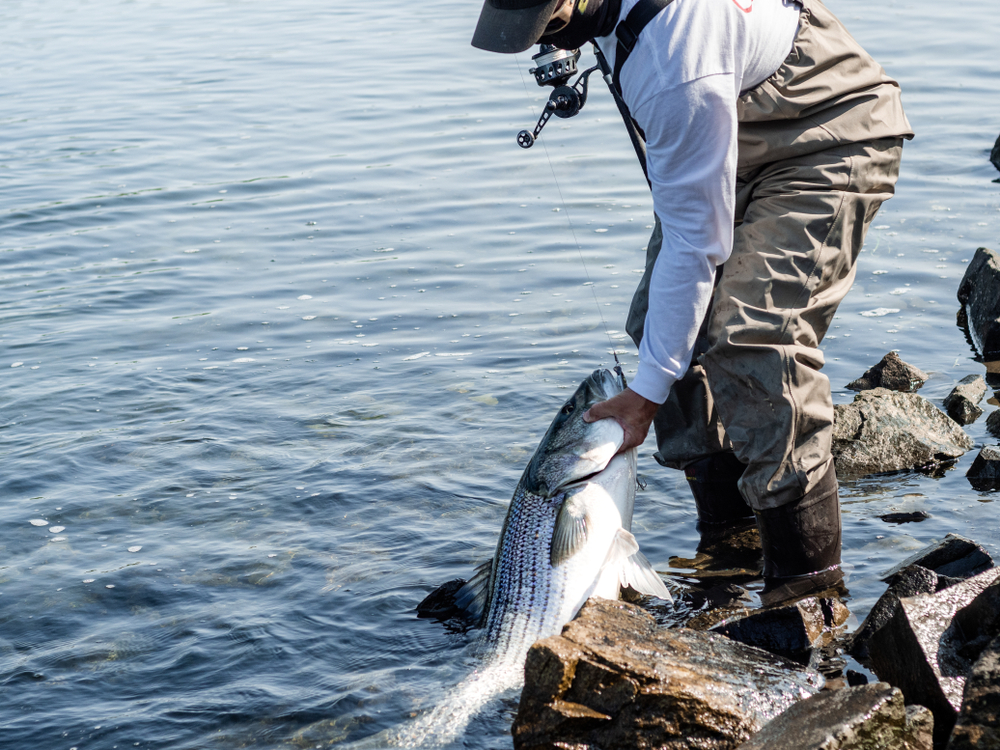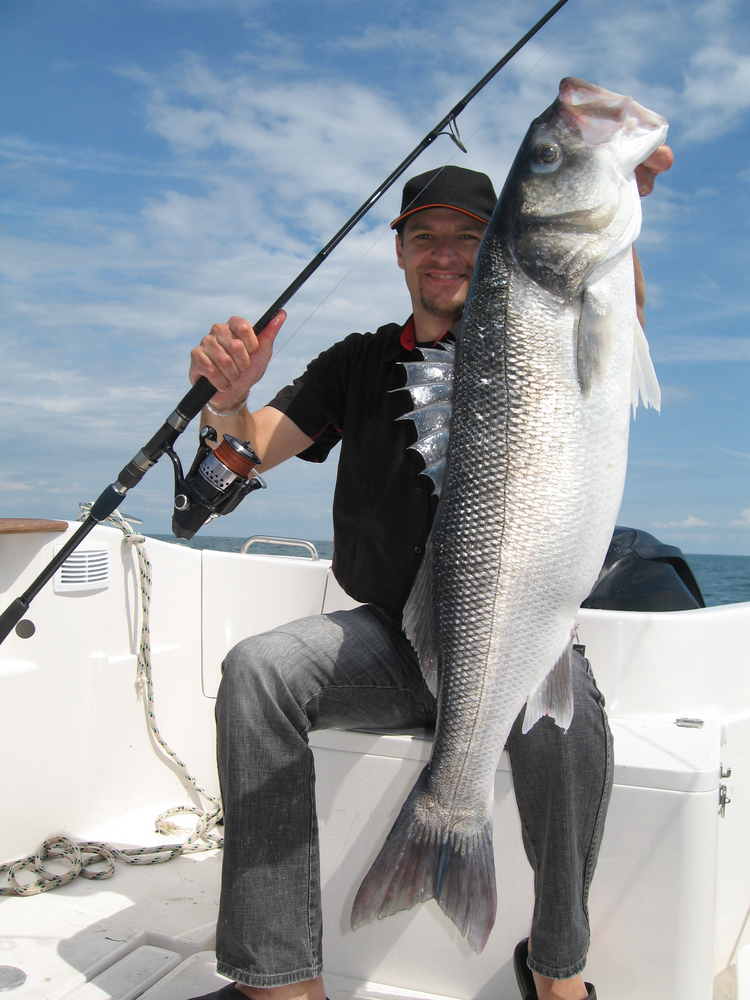Now that the cooler months are upon us most people are spending their days preparing for the holiday season. Weather it is a trip to the farm to enjoy the fresh smell of apple cider, or preparing for a thanksgiving feast, a buoyant enthusiasm seems to spark our daily routine. For the saltwater fly-fisherman however, it is the time of year that presents the greatest opportunity to hook into a striper of truly trophy proportion. This is the time of year when the cows arrive, the female stripers as they are called, migrating south from our northerly neighbors. As these trophies, arrive the saltwater fly angler needs to be prepared. Now that the lazy summer days of catching schoolie bass and snapper blues and behind us, so should the methods in which we target these smaller fish. What is the definition a trophy striper on the fly? Ten pounds? Twenty Pounds? Thirty pounds? I imagine that the word trophy means something different for every angler. For the fly angler however, a striped bass over fifteen pounds is truly a trophy catch. For the long rodder targeting these linesiders in the suds, there are many factors that must come into play in order to increase your chances of successfully hooking and landing these fish. The slightest mistake before or during the battle with these cows can leave you breathless as your line goes slack and your trophy swims off into the cool northeast waters.
Have the Right Gear
The eight and nine weight rods that were used for spring and summers stripers should be put away until next season. Ten to twelve weight graphite fly rods with stiff butt sections will be the rods of choice for these cows. Besides having to cast larger flies into stiff winds, you will need a stick that will enable you to put pressure and leverage on a big fish. Make sure that your rods are in perfect working order. Cracks, nicks, or loose guides will end your fight prematurely and leave your off on the sidelines with a three piece rod that used to be two. Your spinning reel for bass should have a smooth cork disc drag system with the capacity to hold 200 yards of 30-pound backing. Although stripers are not known for extremely long runs, it is always better to be prepared with more backing than to be spooled. Large arbor reels are recommended but not required. The larger diameter spools will give you a greater “rotation to line retrieve ratio” by allowing you to gain more line per wind should the fish decide to swim directly toward you. When targeting trophy stripers from the beach and intermediate fly line will be your workhorse eighty percent of the time. It would be wise for the beach or jetty bound angler carry extra spools or shooting heads of floating and fast sinking lines. The sinking line should be a Teeny XD 300 or TS 350 grain line. The Teeny lines allow you to get your fly into the strike zone when fish are holding just off the beach in rip lines or in heavy currents at the tip of a jetty. One very effective technique is to use a floating line to present top water flies such as Bob Popovics Bangers, Cap Colvin’s Ka Boob Boom, or Lou Tabory’s Snake fly. Your leaders should be between seven and nine feet long and tapered. Keep your leaders simple and strong. Minimizing the amount of connections between the different grades of monofilament will lessen the chances of your knots breaking. Start with a four-foot forward section of 50-pound mono, followed by a two-foot middle section of thirty pound mono, ending with a two-foot tippet of 20-pound mono. Check all your blood knot connections to make sure they are strong. If the monofilament becomes chafed while fishing, change it immediately. Flies should emulate the prevalent baits at the particular time you are fishing. Bunker, rainfish, sand eel and herring patterns should all be in your box. In addition to these baitfish patterns, don’t forget a hand full of top water flies that create commotion on the surface and push water. One of the greatest thrills in catching big linesiders is to actually watch the take on the surface.
Getting Hooked Up

Having the proper tackle is important if you desire to tangle with big stripers, but unless you know the ins and outs of how to locate and successfully land these powerful fish, your quest to ensure solid hook ups will be a disappointment. Because stripers are now on their southerly migration, feeding patterns are different from that of the spring and summer. Throughout the day you will see large schools of fish gorging themselves on pods of baitfish. These blitz situations provide the best opportunity for the fly angler to hook into a screaming linesider. One telltale sign that this is happening is to locate birds diving and darting in on one specific area on bait. It is important to remember that at this time of year both small and large fish will be mixed together while feeding. The smaller, more aggressive stripers will be toward the top of the school, generally in the upper water column. The larger, trophy sized fish that you are targeting will generally hold below the smaller fish, picking off injured baits as they trickle to the ocean floor. In this situation it is important to get your fly deep. The retrieve should be slow and erratic in order to emulating an injured baitfish. Don’t rush your retrieve through the center of the blitz. By slowing down and keeping your fly in the strike zone longer, you increase your chances of hooking up. Another proven technique used for targeting trophies is to work the edges of the blitz. A meal that appears to be escaping is sure to be swiped up. Many times however, these blitzes will take place below the water’s surface with no sign of top water activity in sight. It is here when we are challenged to determine where this subsurface feeding takes place. As there is no way to pinpoint exactly where and when larger fish will be feeding, the savvy angler will read the water for potential feeding areas. The shore bound anglers will want to concentrate their efforts around deep holes and bowls located just of the ocean’s edge. It is here where larger fish will prowl and trap baits against the beach. Don’t be surprised if the strike comes just as you are preparing to lift the fly for another cast. In many instances these linesiders will stalk their prey all the way to the beach before the attack. Jetty tips are also prime big fish holding areas. Finding a jetty tip with moving water is where you will need to be. Cast up current and allow the fly to be swept into the strike zone before you begin your retrieve. Be prepared at any time during this process for a strike. While fish will be feeding all day along during this time of year, dawn and dusk will still the best time of day for the shore bound fly rodder. These are the best times to break out the top water poppers. Use big bangers and boilermakers that cause a commotion on the surface. Work them off jetty tips and inside pockets of deep water. White, silver, or bright yellow are the colors you will want to use for your topwater flies. Always keep a watchful eye of your fly when fishing top water. Big fish are notorious for tail smacking their prey before swallowing. This is done to stun the baitfish for a quick and easy meal. Pay close attention to the popper as it comes across the surface. If this happens, slow your retrieve down a bit and shorten your pulls. Most likely your fly will be sucked beneath the surface and the fight is on.
Fighting the Battle

The first and foremost factor in successfully landing big stripers on the fly is to get a solid hook set. When the fish hits, the run will begin immediately. It is important to drive the hook home by performing a series a sharp strip strikes. Make sure beforehand that your hooks have been properly sharpened. Once the hook has been set, let the fish make her initial run without interruption. It is here when you want to make sure that all of the line is cleared out of your stripping basket and quickly get the basket out of the way by spinning it behind you. During the run you will want to apply pressure to the fish by keeping your rod slightly off to one side. If the fish is heading out and toward the right, your rod should be tilted to the left and vise versa. This is done to maintain pressure on the fish and keep her off balance. The butt section of your rod should be tight in front of your waist, with the rod tip parallel to the water about one foot above your waistline. Once the run has ended, start gaining line immediately. Keeping the fish off balance will require you to maintain your rod position low and in the opposite direction in which she is swimming. If she turns, switch your rod angle to the other side. If the fight is taking place on the jetty, make sure you have planned an escape route beforehand. Unless someone is standing by with a net to assist you, chances are you will need to walk the fish off the jetty and land her on the beach. You will want to gain line rapidly by “short stroking” the fish in. Similar to the reel down pump up method of heavy tackle offshore fishing, short stroking is when you reel down approximately three to five rotations and slowly pressure the rod back up eight to ten inches before your downward reel rotation begins again. Remember that your are using fly tackle. Do not lift the rod tip above your chest while using this technique. As the fish gets closer to your landing position be prepared for a second shorter run. Do not horse the fish in during this run or allow any slack in the line to get between you and the fish. Most big fish that are lost during the fight are done so from this point on. By the time you get her to the waters edge she will most likely be exhausted. Use precaution when landing her. Don’t try to pull her out of the wash with your rod. Rather, keep her head up and use the water washing up on the beach to guide her home. As the wave begins to lift the fish, back up and keep a tight line by reeling her up to the beach. Once she is safely on the beach, take a quick photograph and put her back in the water gingerly. Before letting her go however, you should revive her by holding her tail and allowing the current to pass through her gills. Once she is ready, she will swim out of your hands and back into the sea.
Just do it
So what are you waiting for? Put the pumpkin pie and apple cider aside for a while. Get out and land that trophy twenty pounder before its too late! Who knows, you may need Santa to bring you a new twelve weight this holiday season for next falls thirty-pounder! Tight Lines!






